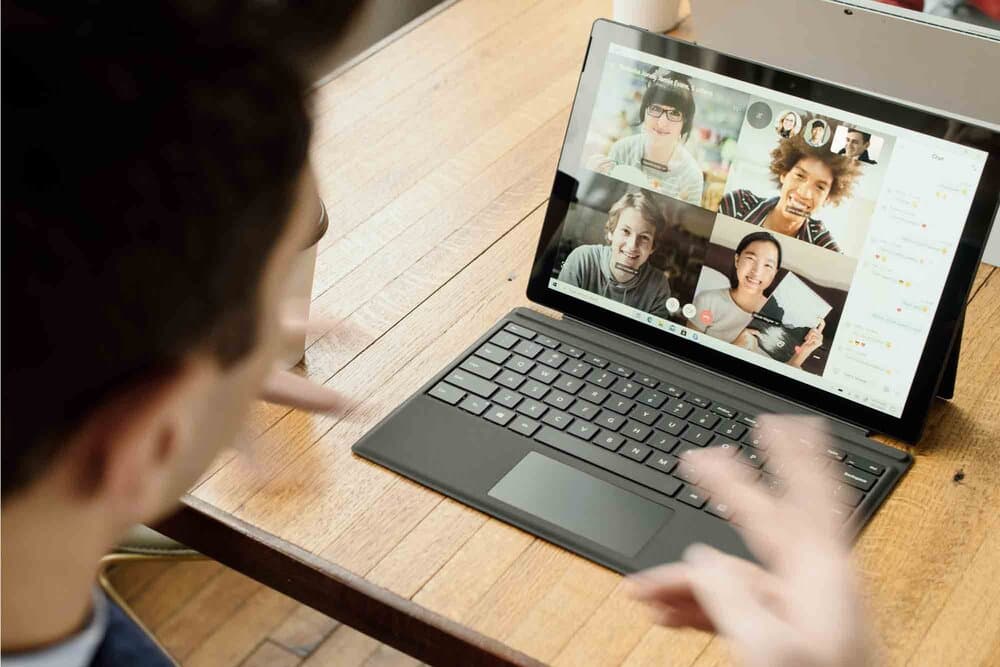How hybrid events can boost your company’s success
Virtual events have become the norm, and while some industries are facilitating in-person events and engagement opportunities – it doesn’t have to be one or the other. Hybrid events are a match made in corporate event heaven; reaching a wider audience and using technology to facilitate greater networking and connections.

KraftyLab Team

A hybrid event isn’t just live-streaming an in-person event. It is also not a subpar version of a live event, or simply video conferencing. The goal of a hybrid event is to create an experience where both your live and virtual audience can share, learn, and connect. A hybrid event is ultimately a more flexible and accessible way to host events – and that is bound to be of benefit to any organization.
For obvious reasons, hybrid events have become increasingly popular. For a lot of businesses, virtual events are no longer their only option, but full capacity events may not be realistic or even desirable. If remote working and networking have taught us anything, is that a lot can be accomplished from a distance. We have also seen all the benefits of distanced events – an ability to reach a wider audience no matter their geographical location, the opportunity to hear and learn from leaders that have busy schedules and may not be able to attend in person, and the ability to adapt traditionally in-person activities to virtual meetings and virtual events.
Is a hybrid event right for you?
Before thinking too hard about the logistics, ensure that a hybrid event is a right fit for your company and your industry. The main issue is simple - what is the purpose of this event? What is your marketing strategy? What is the goal - is it to share information and to network? Or is it to launch or demo a new product? Is it a conference across your industry for experts to come together and share their knowledge?
Whatever the event’s purpose is will determine the aspects of hybrid events that will most suit you. If you are hosting an industry influencer or experts who will deliver a series of talks or workshops, this can be followed by a live panel or a live Q&A session. If the goal is to demo or launch a new product, this can be a great opportunity to send out samples of your product to your attendees, and allow them to get to know your product and service, for them to follow along from home and in-person – this may help you test out how people interact with the product, the reaction and it may boost sales if the event is successful. Similarly, event attendees may be offered a special discount for their attendance if they pursue further services from your company.
What can a hybrid event consist of?
A hybrid event is simply an event with in-person interactions combined with virtual online components. The online components are increasingly varied, and this may look like synchronized slideshows, social media live streaming, or event-specific mobile apps to chime in during the event.
A key benefit to virtual and in-person attendees is the ability to live stream and watch back and give the audience access to the content shared or discussed at your event. You can make the content accessible across certain platforms, this may be in a shared database or may come with their ticket if it is a paid-for event. Especially for large-scale events, the vast amount of knowledge and wisdom that can be shared at a single event is too much for most people to digest and remember. An added perk to their ticket may look like a summary document of the event, including key takeaways and further resources. There can be pre-recorded content for virtual and live viewers, which can boost the marketable cost of your event.
The content created at and from the hybrid event can be advertised and used on social media platforms and your company website. You can even create a virtual marketing campaign through t it. For large-scale conferences with renowned experts within the industry, ticket prices may be a bonus that will contribute not only to the company but sponsors and other guests, it is a great marketing opportunity to build an online brand reputation and rapport within your industry.
While hybrid events can be a more cost-efficient way to deliver an event to a large audience, there are some issues to consider. Not only do in-person facilities need to be on point for the live attendees at the physical event, but the tech needs to be tested for and virtual attendees, ensuring lighting will be sharp and clear on the adequate focus (ie. a presenter), that sound will not be fuzzy or glitchy, and lastly, that people both at home and in-person will feel seen and heard - the virtual event platform must take into account that this is not just a regular video conference, but a high-end event. The tech crew must be familiar with the set-up of a hybrid event including camera angles, filming on LED stages, segment filming, and even connection support on standby.
Why is a hybrid event valuable?
The obvious answer is reaching a wider audience, and even additional data being collected about your attendees, the time they spend on each segment, the amount of interaction with different speakers and events. Your experience of events in times of lockdowns can help you design an event that is client-focused and optimizes the user experience – this can easily be achieved by thinking of events your team may have attended throughout the several lockdowns, what made them memorable or special?
There are existing platforms that will ease the hosting of a hybrid event, while Zoom may be a clear choice for some for its built-in features of chats, break out rooms, which can facilitate virtual engagement, large scale events may use an app or polls to allow people to engage or even use a platform like Vimeo for password-protected streams if tickets are relevant to your event. To give virtual attendees a greater experience, you can set ‘watch parties’ where teams from a specific location may come together to tune in, you can give them the ability to interact – whether that is joining a live Q&A or voting in for questions.
Realistically, your event needs to consider that your live and virtual audience will not have the exact experience, but this does not mean they cannot have two great separate experiences. It is far more practical to have aspects of the event dedicated to the in-person and virtual experience, allowing them to come together when it is relevant. Give your attendees networking opportunities, without networking your event is just an online conference. If you provide them with a platform to come together, to have group break-out rooms or one-on-one interactions between attendees, your event will be more successful even if they cannot hold these conversations face-to-face.
The right event organizer can ensure that your attendees get the most out of the virtual and hybrid events - with the right venue and set-up, a virtual event can allow for a safer high-quality experience for all your clients. Presenters can be shot with a relevant panoramic backdrop, and screens can be available to display content, branding, and sponsor-related content on various virtual components. They can help design an agenda that is fun and engaging – finding ways to break up the day, with custom guests, and choosing mini-events that are best suited for in-person and virtual attendees. You can then follow up your event with a post-event survey to gain insight into people’s experiences with your event, and how you can improve in the future.
Finally, a hybrid event can be a way to use what we’ve learned from remote working while incorporating the elements that make in-person events so special. Create an environment that is user-friendly and accessible (subtitles and interpreters, inclusive language, among other things). This will hopefully not only boost networking within your industry and potential clients but also create greater awareness of your brand, your products and, ideally – boost sales.




